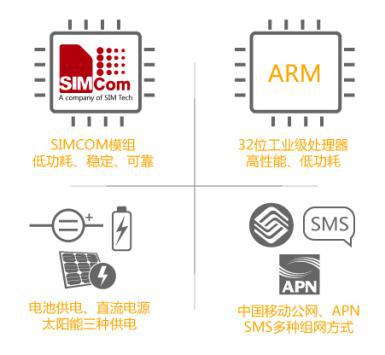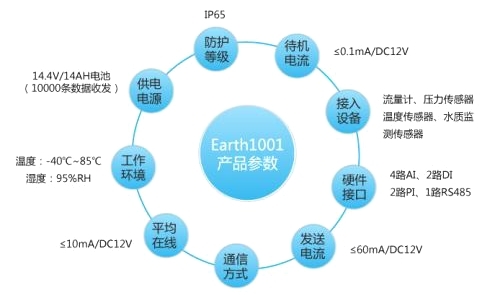Wireless monitoring system for tap water pipeline network 1、 System Overview With the rapid development of the economy and the acceleration of urbanization construction, the discharge of various pollutants has caused varying degrees of pollution to rivers, reservoirs, and groundwater bodies, leading to continuous threats to urban water sources; On the other hand, due to the increasingly severe weather changes and the continuous occurrence of extreme weather conditions, the frequency of pipeline safety operation accidents caused by pipeline aging has significantly increased, posing a serious threat to drinking water safety and pipeline operation guarantee. Due to the long pipeline and complex geological structure, tap water may remain in the pipeline network for a long time, which can lead to complex physical, chemical, and biological changes, resulting in changes in water quality; The distribution range of the tap water pipeline network is wide. If there is a leak, it needs to be dealt with in a timely manner, otherwise the losses will be severe. How to conveniently and economically monitor various parameters of the tap water pipeline network in real time has always been a problem for the management personnel of relevant departments. The traditional monitoring of the tap water pipeline network mainly relies on periodic inspections by duty personnel. The high labor cost also leaves many human factors and poses safety risks. To address the difficulties and high costs faced by water companies in scheduling water resources, our company has launched a wireless monitoring system for ultra-low power tap water pipelines based on 4G communication. This system mainly monitors real-time parameters such as pressure, flow rate, and water quality of the tap water pipeline network. The system relies on mature network operators and utilizes mainstream cloud services. Staff can access relevant data through a data monitoring platform or mobile client. The platform can achieve remote monitoring of data, save databases, generate various reports and curves, and facilitate water companies to monitor the flow, pressure, water quality, and other conditions of major nodes in underground pipelines. 2、 System advantages 1. Ultra low power consumption From component selection to the adoption of ultra-low power design in the system, the system is powered by batteries. In response to the design of no power supply on site, the battery life is about 2-3 years, which solves the problem of difficult on-site power supply for wireless transmission equipment in this industry. 2. Low cost communication service fees Using a 4G public network platform, there is no need to build a network, only the installation of equipment is required, and the construction cost is low. 3. High reliability The 4G network itself has a complete frequency division multiplexing mechanism and strong anti-interference performance, completely avoiding the multi frequency band "collision" phenomenon of traditional data transmission radio stations. 4. Real time online 4G network has real-time online characteristics and supports multi-point simultaneous transmission, enabling fast and real-time bidirectional communication between multiple monitoring points, fully meeting the system's requirements for real-time data collection and transmission. 5. Wide monitoring range The 4G network has achieved nationwide coverage with unlimited expansion and access locations, meeting the access needs of mountainous areas, towns, and cross regional areas. 6. WeChat push alert information Parameters such as pressure, flow rate, and water quality can be set with threshold upper and lower limits. If the limit is exceeded, an alarm will be automatically triggered, and the webpage will refresh in real-time to remind users. At the same time, alarm information can be pushed to the management personnel's WeChat. 3、 Product Features The low-power remote measurement and control terminal is a waterproof measurement and control device powered by high-performance lithium batteries. It can collect the pressure, flow rate, and water quality of the tap water pipeline network, and transmit the collected data remotely through 2G/3G. It is particularly suitable for monitoring sites that do not have power supply conditions and have harsh environments.
Product parameters
4、 System composition This system mainly consists of low-power remote measurement and control terminals, cloud servers, and Internet networks. The measurement and control terminals can be connected to external pressure sensors, temperature sensors, flow meters, water quality monitoring sensors, etc., with reserved video interfaces.
|


